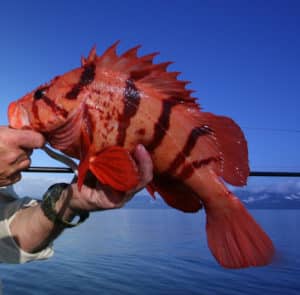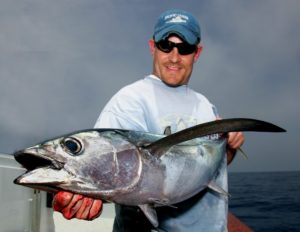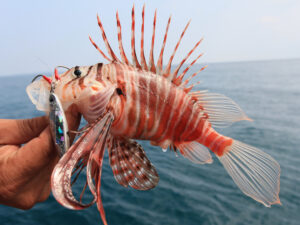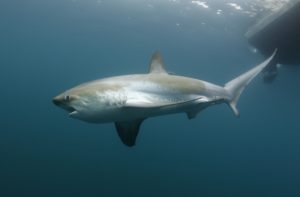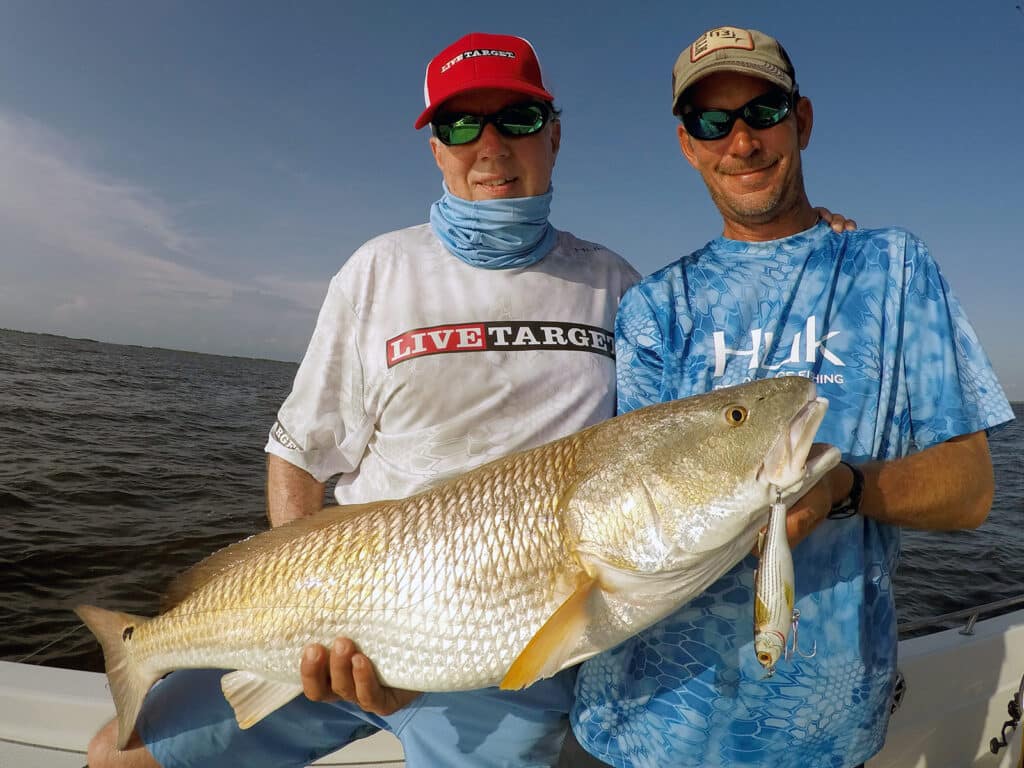
Have you ever wondered why red drum make a drumming sound? Do you know why redfish have a spot on their tail? How far can drum migrate? How old do they get? How big can they grow? Why are redfish red? Do they recognize their friends and family members?
After 30 years of chasing redfish, my friends and I have asked these questions and more. To find the answers, I had to find the experts.
Dr. Susan Lowerre-Barbieri (SLB) is a research professor at University of Florida and research scientist at the Fish and Wildlife Research Institute. Her many projects include research on the connection between drumming and spawning.
Dr. Sean Powers (SP) Chair of the Marine Sciences department at the University of South Alabama and is a Senior Marine Scientist at the Dauphin Island Sea Lab. Dr. Powers’s research focuses on the ecology of marine fish and invertebrates, particularly those that support commercial and recreational fisheries.
I asked the experts and they answered. Surprisingly, most of our questions have scientific research. Some of the redfish myths and mysteries will remain unknown.
Sportfishing: What is the purpose of drumming? Do males and females make the drumming sound? What age do redfish start drumming?
Dr. Susan Lowerre-Barbieri: Drumming is associated with spawning and becomes more rapid and with more “knocks” as fish get closer to a spawning event. We observed this in-captivity. Only males drum. Sonic muscles have been reported in males as young as nine months, but they are not believed to become functional until the fish mature.
Dr. Sean Powers: The sound is produced by the swimbladder which is well developed in this family of fish. The swimbladder is the shiny white sack you see when you clean a red drum. It can greatly expand in size.
Sportfishing: Large redfish are female. How do age and length correlate? How old is an 18- to 26- inch drum? How old is the oldest red drum?
SLB: In the 10,000 adult red drum that we non-lethally sampled off Tampa Bay, females and males are similarly sized. Mean-size of males was 35.3 inches and mean size for females was 35.7 inches. Fish in the slot from 18 inches to 27 inches are two to four years old. The oldest drum sampled in Florida was 35 years old. Red drum older than 50 years have been sampled off the Chesapeake Bay.
Sportfishing: What is the purpose of the spot on the tail? Why does each drum have a unique spot pattern? Why do some fish have multiple spots? Does the spot pattern change over the drum’s life? Does the unique spot help them recognize each other?
SP: The spot is likely a predator defense strategy. Predators would clue in on the spot thinking it is an eye. The predator strikes the back of the tail, where it is likely to miss the redfish or do less damage. Multiple spots are probably just random mutations and don’t offer any advantage. Spot pattern doesn’t change much over a redfish’s life. The size and shape of the spot is set but some smaller spots may disappear.
To our knowledge, red drum do not recognize other individuals. There is really no evolutionary benefit to recognizing each other since the fish are group spawners.
The spot is what we call an ocellated spot with a dark center, white mid circle and a black outer circle. The pattern is similar to an eye. The spot is so characteristic of the species, that the redfish’s Latin scientific name is Sciaenops ocellatus.
Sportfishing: How far offshore do redfish migrate? What is the farthest recorded migration? Only drum over three years old migrate into open water.
SLB: We have tracked them up over 50 miles offshore of Tampa Bay. Some fish as young as age two recruit to open water.
SP: Once red drum are reproductively mature, most will spend a large part of their lives offshore. But it’s really better to consider nearshore waters zero to 12 miles from the beach with the vast majority with three to six miles. Most of our data from tagging studies does not suggest large scale movement is very common. Most red drum stay near the estuary where they grew up. Major hurricanes result in greater movement. There is enough large-scale movement across the Gulf to make it a very genetically homogeneous population. We are trying to resolve how much interstate movement occurs with a study to look at the issue supported by the CCA.
Just because redfish move offshore to spawn and feed, doesn’t mean large reds don’t spend time in the bay. Some older fish will split time and go back inshore. The big red drum schools move offshore in April-May and August-November. The latter schools form because of reproduction. Redfish in the April schools are not reproducing, so they must be gathering to feed.
Sportfishing: Some red drum are a golden color and others are dark copper red. How does diet, salinity, location affect the drum’s color?
SP: We know that diet and habitat, not so much salinity, influence coloration. We see red drum that are very silver to copper color. The tail sometimes has a brilliant blue hue. We don’t know enough to predict which habitat and diet combinations produce which colors. In fact, your readers probably know more. Collectively, anglers have more field observations. But we know diet, which reflects habitat type, influences thyroid hormone levels. In captivity, thyroid hormone levels influence coloration.
Sportfishing: Drum over 40 inches weigh one pound per inch?
SP: Length and weight really varies. But, a pound per inch over 40 inches is a safe rule of thumb. Generally, fish in better condition have greater weight per unit length.
Sportfishing: Can redfish live in freshwater?
SLB: Juvenile red drum are often sampled from freshwater sections of coastal rivers.
Sportfishing: Are saltwater drum and freshwater drum related?
SP: Freshwater drum (Aplodinotus grunniens) are in the same family Sciaenidae. They are the only Sciaenid in North America that are freshwater.

